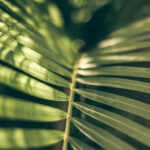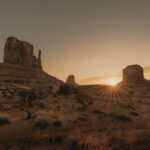The greatest wildlife photographers possess three secret weapons: patience, determination, and camouflage (and shiny expensive gear, of course). German nature photographer Ingo Arndt employs all three during shooting assignments. He will sometimes spend weeks lying in wait to get the shot that he wants—and his amazing work ethic shows in his photographs.
In the video below, Arndt discusses the challenges and joys of wildlife photography and his continual quest to set his work apart:
Arndt spent a lot of his childhood immersed in nature, learning how to shadow animals and how to best conceal himself in order to observe them. These experiences made wildlife photography an easy career move when the time came for decision-making and they also taught Arndt to appreciate the beauty and majesty of even the smallest creatures.
“Everything has a new story to tell,” said Arndt. “It doesn’t always have to be the elephant or the grizzly. It could also be an ant or a butterfly. There are so many fascinating things to discover, especially at the macro level — that’s where you’ll often see something new and surprising.”
While spotlighting lesser known creatures and animal-related phenomenon is certainly one way to set one’s work apart, Arndt also spends a great amount of his energy finding unique ways to photograph higher profile creatures, such as grizzlies. In a recent project on Alaska’s grizzlies, Arndt designed a remote control camera vehicle capable of withstanding bears’ exploratory bullying to capture close-up footage of the furry giants.

This image was taken with Arndt’s remote control camera vehicle.
“The challenge was coming up with something new and different. Bears are beautiful and everyone likes them, so they’re popular with photographers, and every wildlife photographer dreams of shooting a grizzly. There are tons of good pictures out there and I had to top them.”
Arndt is a Canon shooter and nearly always relies on a tripod to stabilize his shots. When he’s able to creep close to less-dangerous species, he uses his Canon EF 70-200mm f/2.8L IS USM, but the majority of his long range images (that means big beasties) are captured with the Canon EF 500mm f/4L IS USM, often accompanied by a Canon EF 1.4x III Telephoto Extender.
Like This Article?
Don't Miss The Next One!
Join over 100,000 photographers of all experience levels who receive our free photography tips and articles to stay current:






Leave a Reply